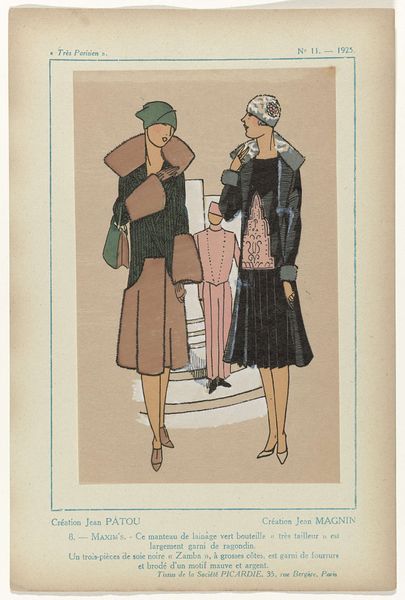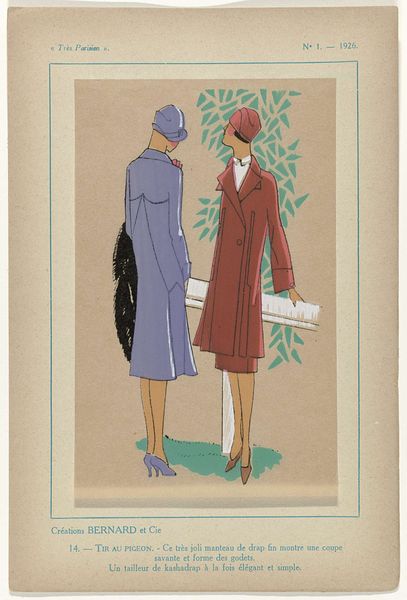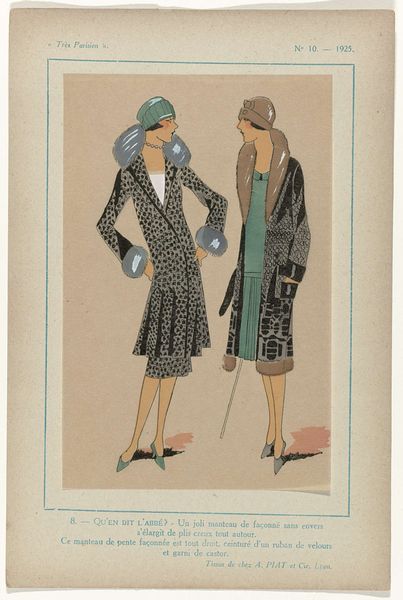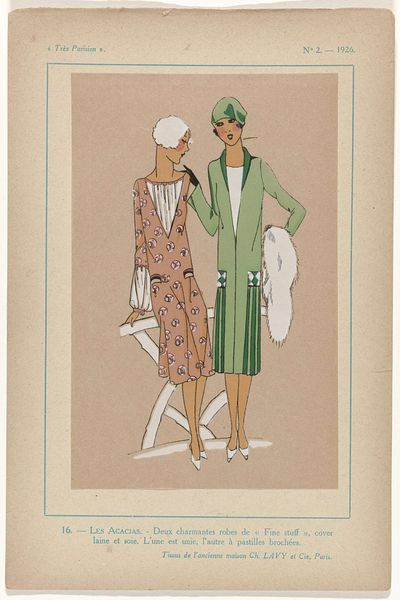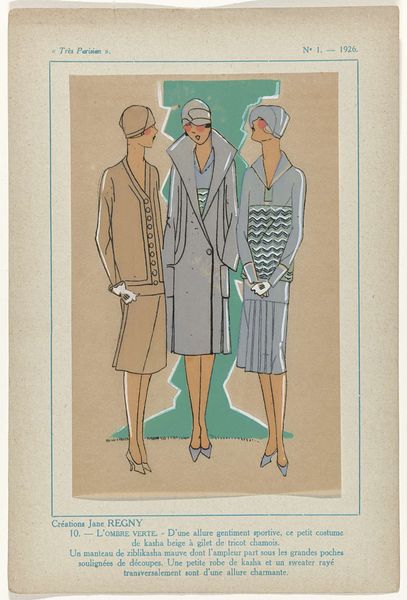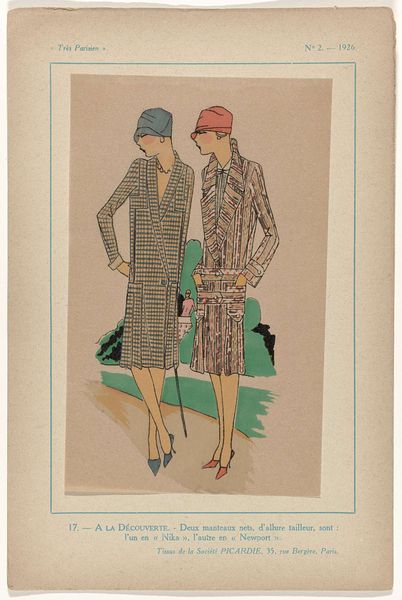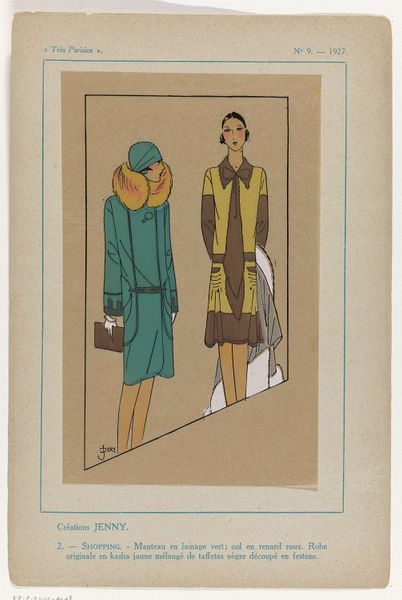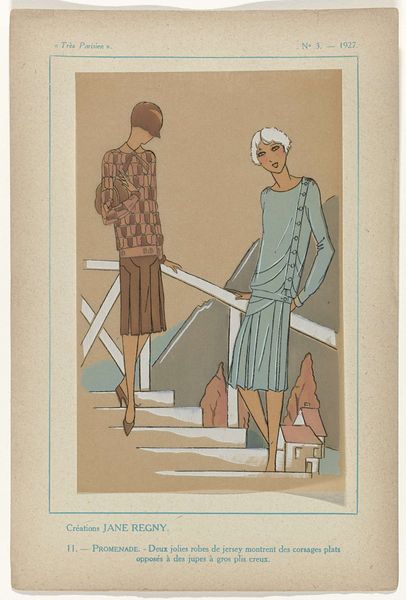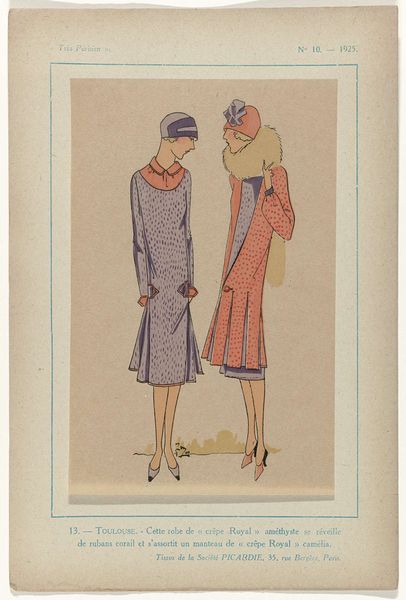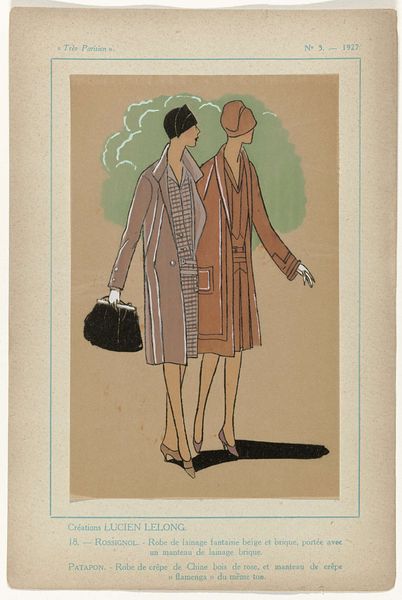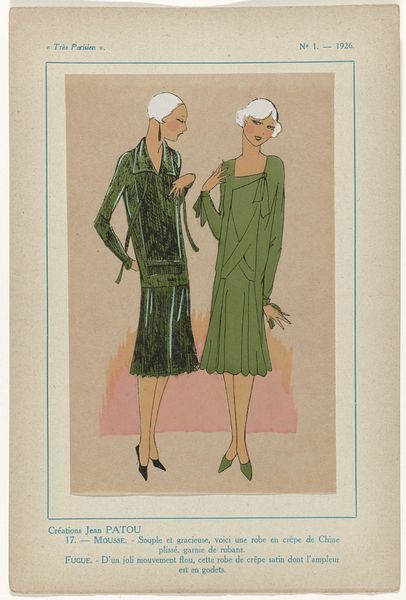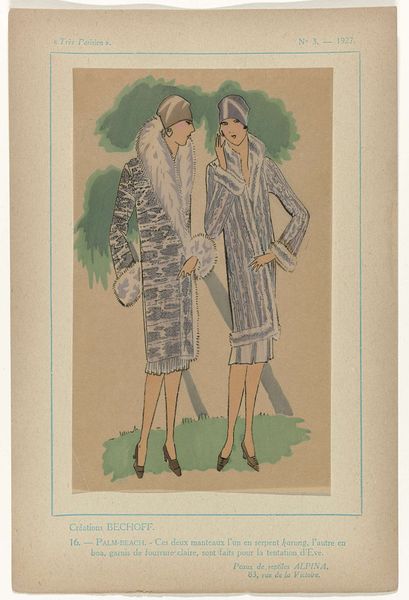
Très Parisien, 1925, No.11, Pl. 4: Créations PREMET - LE ROI S'AMUSE 1925
0:00
0:00
drawing, graphic-art, mixed-media, print, paper
#
art-deco
#
drawing
#
graphic-art
#
mixed-media
# print
#
paper
#
watercolour illustration
Dimensions: height 195 mm, width 120 mm, mm
Copyright: Rijks Museum: Open Domain
Curator: Here we have "Très Parisien, 1925, No.11, Pl. 4: Créations PREMET - LE ROI S'AMUSE", a print employing mixed media, currently held in the Rijksmuseum collection, conceived by G-P. Joumard. Editor: My immediate impression is one of quiet elegance. The limited color palette, mostly shades of green and beige, evokes a certain restraint, a sophistication typical of the Art Deco era, perhaps? Curator: Indeed. This piece serves as a fascinating artifact when considering the evolving role of women in the 1920s. The fashion itself speaks volumes. The flapper dress, the confident yet somewhat demure poses – all of it is performative within a rapidly changing social landscape. Consider how women began to occupy more visible spaces and exert their agency, both socially and politically, following the war. Editor: And visually, the strong vertical lines and geometric shapes align perfectly with the Art Deco aesthetic. I notice the hat. A peculiar and quite striking design choice. How do you read its symbolism? Curator: The hat, like many elements in fashion, is complex. At face value, it serves to both adorn and, paradoxically, obscure. Consider the woman's gaze; it’s lowered, perhaps a nod to traditional modesty, even while the overall attire screams modernity and independence. These tensions are key. The era was characterized by simultaneous progress and adherence to more traditional values. The limited colors can suggest to cultural norms or accepted styles of beauty for women at the time. Editor: I find myself drawn to the textural contrasts. The smoothness of the paper plays against the suggestion of velvet, fur, the crispness of crepe satin in the descriptions below. I imagine Joumard was very attuned to evoking a tactile experience through purely visual means. Curator: Absolutely. Joumard understood the semiotics of fashion – how clothing becomes a carrier of meaning, reflecting and shaping the identities of those who wear it and those who observe it. Editor: Reflecting on this artwork, it’s a striking time capsule – a frozen moment of aspiration and negotiation, perfectly encapsulated by Joumard's skillful hand. Curator: Precisely. This piece prompts us to contemplate the dynamic relationship between artistic expression, material culture, and the socio-political contexts that influence and inform both.
Comments
No comments
Be the first to comment and join the conversation on the ultimate creative platform.
